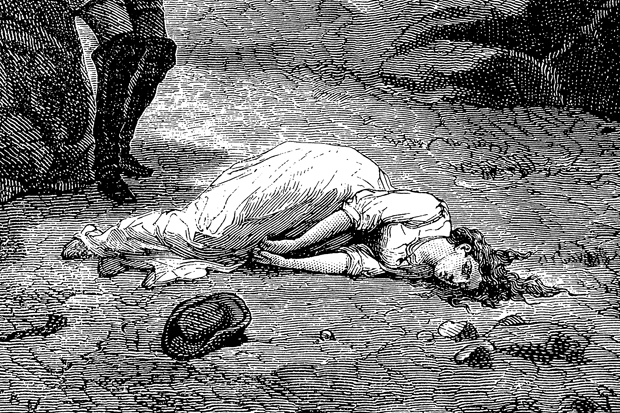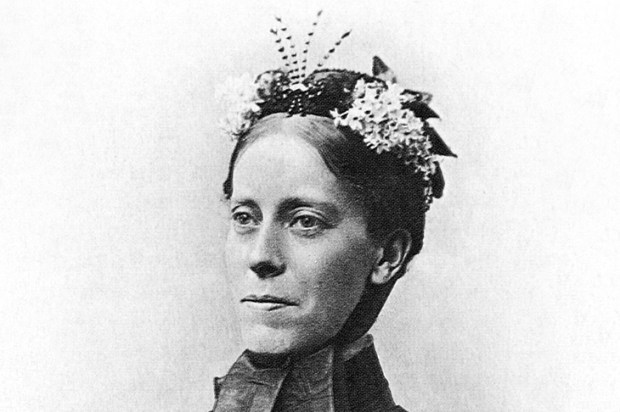With the current political saga running in our heads, trumping all other stories, it has been hard to concentrate on the bedside book over the last few weeks. When, in this true Victorian murder mystery, I came to the sentence, ‘Ebeneezer Pook, however, had no intention of succumbing to the crowd’s pressure’, all I could see in my head was Jeremy Corbyn emerging from his house, ducking under the prickly rosebush and refusing to stand down. And when I came to this complicated passage:
Mrs Thomas’s story buttressed the account that William Sparshott had given and would dovetail with the account Olivia Cavell was about to give. Nevertheless, Coleridge could only give Perren over to Huddleston’s cross-examination with a powerful sense of foreboding, the same feeling that Superintendent Griffin had nearly three weeks before…
…I shut my eyes, sighed, checked the BBC news website, read a Guardian piece online, checked the Matt cartoon, and then crawled slowly back to the beginning of the paragraph and reread it very carefully. Oh, yes, it was about the nails that Perren said he had bought from the Thomases’ shop in Deptford but which actually the Thomases didn’t sell in their shop…
Paul Thomas Murphy, who lives in Boulder, Colorado, wrote the highly successful Shooting Victoria in 2012, about the eight assassination attempts on Queen Victoria, and he admits at the beginning of this book that he was looking for another topic and asked the historian Michael Guilfoyle, ‘If you were to write a book about anyone buried in Brockwell and Ladywell cemeteries, who would it be?’ Guilfoyle answered, ‘Jane Clouson’, and that’s how this book came into being. It is a bit of a ‘What book about Victorian London shall I write next?’ book, but it does illuminate an intriguing little story, and having read it I now plan to make a trip to Brockwell cemetery to find the tomb. The book’s title is the exact title of a penny dreadful, written at the time about the sensational murder, of which a single copy survives in the British Library.
Jane Clouson, a 16-year-old maid-of-all-work in the employment of the middle-class Pook family in Greenwich, was found brutally murdered, her face mutilated, on Kidbrooke Lane at 4.15 a.m. on 26 April 1871. Someone had clubbed her to death with a hammer. The book opens with this event, and then describes exactly how the investigation proceeded from that moment on.
Basically, it’s a Sherlock Holmes story without Sherlock Holmes. And my goodness, we could do with Holmes! It’s all Lestrade, from start to finish. The whole thing is a shambles. One of the first disasters, from the investigation’s point of view, was that 20,000 ‘pilgrims’ were allowed to descend on the crime scene on the first-ever Bank Holiday Monday to gawp, wiping away all footprints. The police manipulated the evidence, desperate to secure a guilty verdict for the man they thought had committed the crime. That man was Edmund Pook, the handsome epileptic son of Jane’s employer Ebeneezer. Jane had told friends she was going to meet and elope with Edmund that very evening, and it turned out that she was two months pregnant. It must be Edmund Pook! But Chief Justice Bovill tore the prosecution’s evidence to shreds and Pook was acquitted.
So, if it wasn’t Pook, who was it? Or was it, in fact, Pook? That question kept me reading. Murphy comes to his own 21st-century conclusion, using modern forensic knowledge to speculate on the minute spatters of blood on Pook’s trousers and hat.
Just one thing got on my nerves: when books by American authors are published in Britain, can’t someone go through them and anglicise the American spellings? Defense, specter, pretense, visited with, afterward, gotten, snuck… With these words coming thick and fast, it’s hard not to read the book in an American accent and that is not ideal for a story set in London SE10. The crime weapon is described, repeatedly, as a ‘#2 Sorby Hammer’. Surely that should be a ‘No. 2’?
The post Death in Greenwich appeared first on The Spectator.
Got something to add? Join the discussion and comment below.
Get 10 issues for just $10
Subscribe to The Spectator Australia today for the next 10 magazine issues, plus full online access, for just $10.
You might disagree with half of it, but you’ll enjoy reading all of it. Try your first month for free, then just $2 a week for the remainder of your first year.














Comments
Don't miss out
Join the conversation with other Spectator Australia readers. Subscribe to leave a comment.
SUBSCRIBEAlready a subscriber? Log in